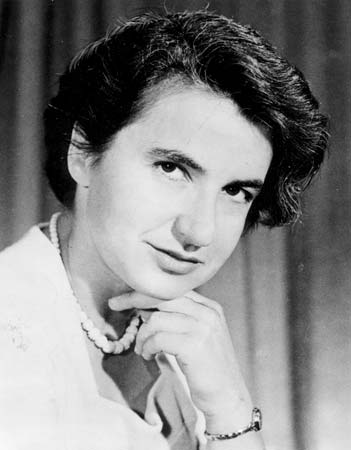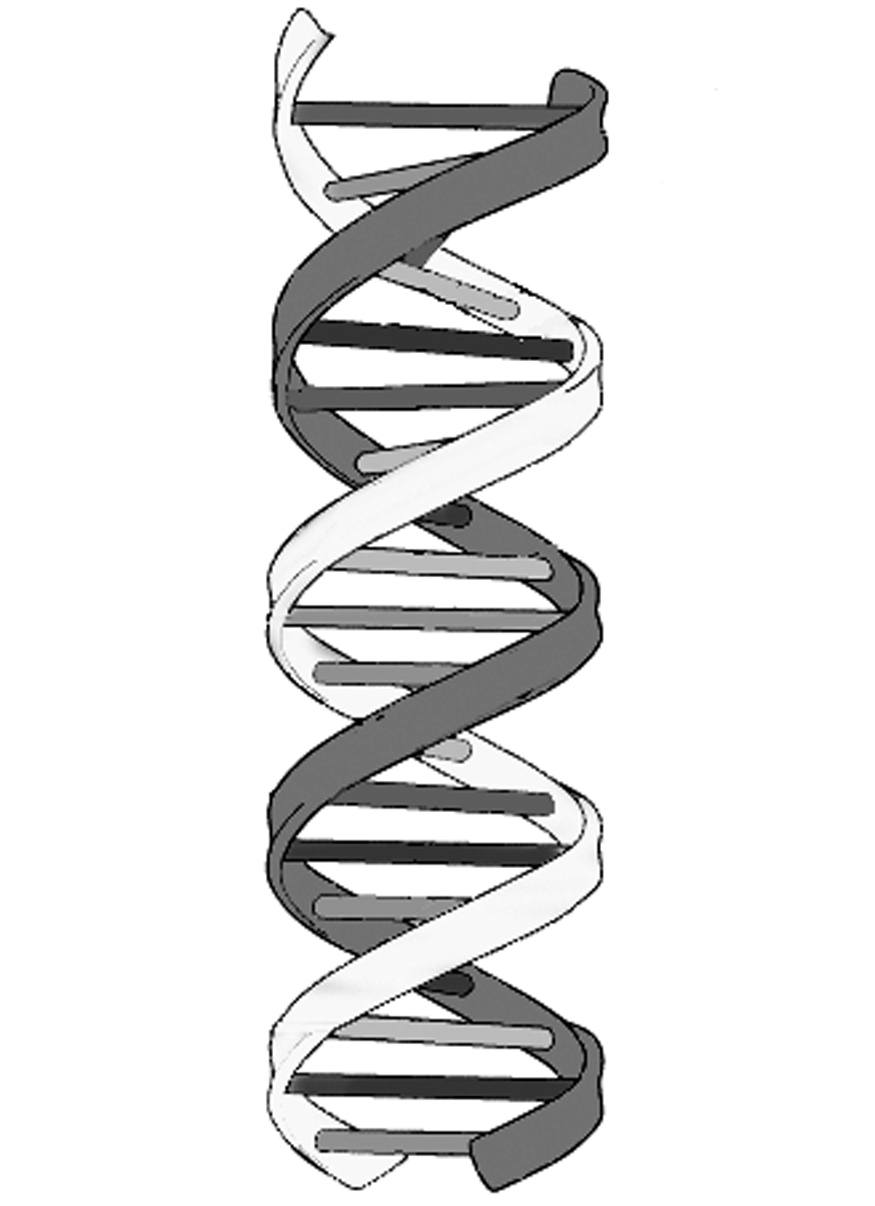|
Rosalind Franklin: Inspiration for DNA Discovery
Rosalind Franklin played a part in one of the most momentous scientific discoveries of the 20th Century, yet relatively few people today know of her contributions or even her name.
Franklin was born in London on July 25, 1920. A curious, studious child, Rosalind knew early on that she wanted to be a scientist. Her parents did not encourage her in that pursuit. At a time when opportunities for employment and even study for women in scientific fields was lacking, Franklin graduated from England's esteemed Cambridge University system and then earned a Ph.D. in physical chemistry. Franklin specialized in the study of coal and worked as an assistant research officer at the British Coal Utilisation Research Association. She gained an appointment to a French laboratory in 1946 and soon learned the practice of X-ray diffraction, which led directly to her most famous work, on DNA, after she returned, in 1951, to England. The job she came back to England for was as a research associate in the laboratory of John Randall at King's College, in London. Franklin led her own project in the study of DNA, or deoxyribonucleic acid. Also leading a project, employing different people, in this area was Maurice Wilkins. Franklin and Wilkins did not get along well; observers saw a bit of jealousy on both sides, although male scientists at this time generally led projects, wrote papers, gave speeches, received awards, and otherwise acted as if they were in charge, which they usually were.
Franklin later left King's College and moved to Birkbeck College, to study viruses, in particular the polio virus and the tobacco mosaic virus. In 1956, she was diagnosed with ovarian cancer. She had continued working through her illness, despite having three operations and even undergoing experimental chemotherapy. She went into remission for awhile, but the cancer returned, and she died, in 1958. She was 37. Throughout her life, Franklin published scientific articles. In total, she published 21 articles on viruses, 19 on coals and carbons, and five on DNA. She received numerous requests to speak at conferences around the world. In 1962, Crick, Watson, and Wilkins won the Nobel Prize in medicine. None of them mentioned Franklin's contribution to their work. Her story became widely known as the result of Watson's publishing a 1968 memoir titled The Double Helix. In the body of the book, Watson denigrated Franklin and her accomplishments, even calling her "Rosy," a nickname that she never had. Watson included a more complimentary picture of Franklin in an appendix to the book, but the main picture that many readers had of Franklin was a negative one. Many people bought Watson's book, and so many people encountered stories of "Rosy." Crick and Wilkins didn't remember Franklin that way and spoke out against Watson's portrayal of her in his book. Another one to protest Watson's depiction of Franklin was another Nobel Prize-winning scientist, Linus Pauling, who was also mentioned in the book. A 1975 biography of Franklin by a friend, Anne Sayre, painted a more complimentary picture of Franlkin, and her story became more widely known. |
Social Studies for Kids |
Social Studies for Kids
copyright 2002–2024
David White



 Based on work that Franklin did, James Watson, Francis Crick, and Maurice Wilkins received the Nobel Prize in medicine for their discovery of the double helix model for DNA. The discovery revolutionized the study of genetics in particular and medicine generally.
Based on work that Franklin did, James Watson, Francis Crick, and Maurice Wilkins received the Nobel Prize in medicine for their discovery of the double helix model for DNA. The discovery revolutionized the study of genetics in particular and medicine generally.  Franklin made a name for herself by excelling in X-ray photography, specifically of DNA. She worked her way through a series of painstaking photographs of the structure of DNA. From 1951 to 1953, she came very close to the double helix for which other scientists are now famous. Wilkins, perhaps nursing his jealousy or disdain for Franklin and her work, took a particularly enlightening photo, now known as Photograph 51, and showed it to Francis Crick and James Watson, two other English scientists also studying DNA. For Crick, seeing that photo provided him with the insight he needed to steer his and Watson's work in the direction that would result in the discovery of the double helix.
Franklin made a name for herself by excelling in X-ray photography, specifically of DNA. She worked her way through a series of painstaking photographs of the structure of DNA. From 1951 to 1953, she came very close to the double helix for which other scientists are now famous. Wilkins, perhaps nursing his jealousy or disdain for Franklin and her work, took a particularly enlightening photo, now known as Photograph 51, and showed it to Francis Crick and James Watson, two other English scientists also studying DNA. For Crick, seeing that photo provided him with the insight he needed to steer his and Watson's work in the direction that would result in the discovery of the double helix. Crick and Watson published their findings in the journal Nature in 1953. The same issue of the same magazine contained articles by Wilkins and by Franklin, but it was clear to readers that Crick and Watson's findings were the main event.
Crick and Watson published their findings in the journal Nature in 1953. The same issue of the same magazine contained articles by Wilkins and by Franklin, but it was clear to readers that Crick and Watson's findings were the main event. 
